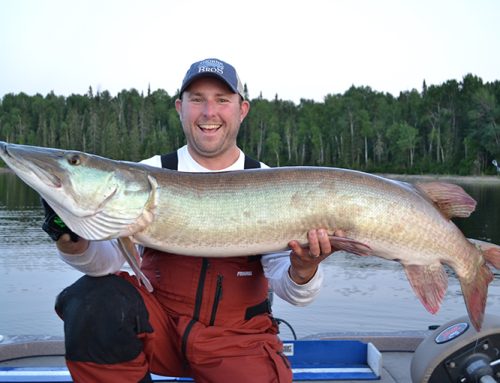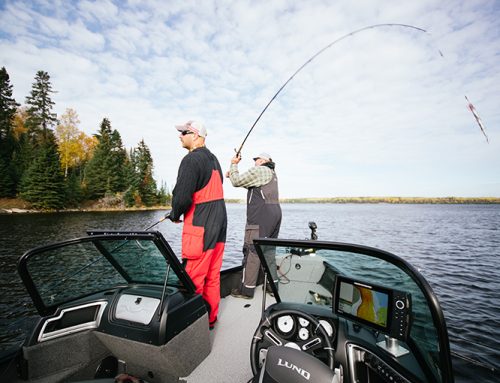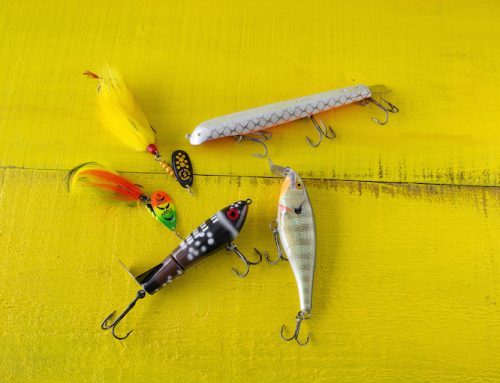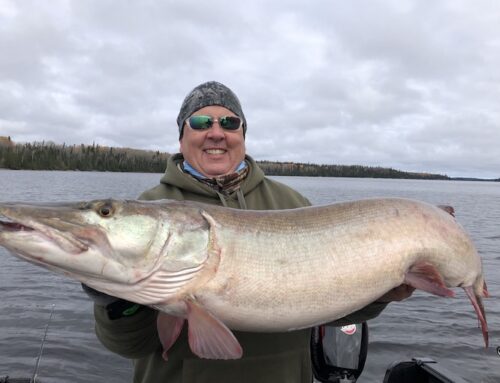
More than a few old-school pike chasers will tell you that you only need two colours on a pike lure: red and white. However, I’ve learned that pike will chew on other colours as well. If you want to catch pike in different conditions, you should have some colour versatility available.
Colour conditions
We all have our pet colour combos for pike, but the smart angler lets conditions dictate the initial approach. Two prime factors affect the way a pike sees the colour of your offering: light conditions, and the tint of the water.
Water tint, or clarity, likely has the largest impact on your choice of lure colour. Water clarity can range from clear to over-brewed tea to muddy chocolate milk, and what’s good in one situation might not be good in another.
In the tea-stained pike waters of the north, classic colour combinations shine. You simply aren’t a serious pike angler without some red and white and Five of Diamonds spoons in your box. These combos are excellent. I suspect they mimic the colours of a pike’s normal prey in northern waters, such as suckers, perch, and walleye.
Chartreuse, fluorescent orange, and firetiger are also good in these conditions. You want the pike to notice your lure in a dim world.
Muddy or greenish-tinged waters call for different colour schemes. Hot colours are still a good idea, but you might also want to present a strong profile here, such as hot colours paired with black.
In clear water, pike can see well. Remember, vibration and eyesight are primary tools for these predators’ feeding. You’ll often find these conditions in classic lake trout waters, which hold fewer but larger pike. Here natural patterns, metallic finishes, and white are prime. In extremely clear water, silver paired with blue or red can be productive choices, especially for spoons.
Scott Jeager, a guide who specializes in fishing muskie and pike in northwestern Ontario, says he sees a seasonal preference in some lakes he fishes. “I find that in the early spring, the pike really prefer the bright orange and chartreuse colours. Yet, come fall, silver, grey, and black combinations that imitate ciscos and other congregating baitfish seem best. So I tend to use bright lures in the spring and flashy baitfish patterns in the fall.”
Bright sky, dark sky
The light of the day also has an impact on the colours that pike like to whack. While one of the things I both like and hate about fishing northerns is their refusal to follow rules, I find a couple of guidelines seem to work, at least most of the time.
Shiny, flashy lures work well when the sun is high in the sky, and solid bright colours work well on overcast days, or in early morning and late evening. This is especially true in clear water.
White is usually a good choice, no matter what the light conditions. There might be better options on any given day and under specific conditions, but white is always a good first bet.
Of course, these are just starting points. I’ve done well with silver spoons on cloudy days in tannic waters, and conversely, fishing firetiger jerkbaits in vodka-clear water under bright skies at noon. These are guidelines, not commandments.






After a lifetime of experimentation I generally only bother having lures in orange, yellow, and some sort of natural color. It is a rare day that one of these will not produce. I agree with the suggestion that white is a great all around color, but I think one of my best producers across the board is orange/ gold. A crank, spinner, or especially a spoon in this color combination just seems to get noticed in almost any light or water conditions